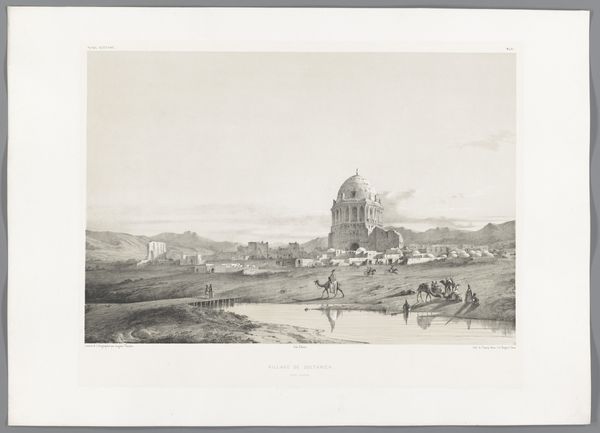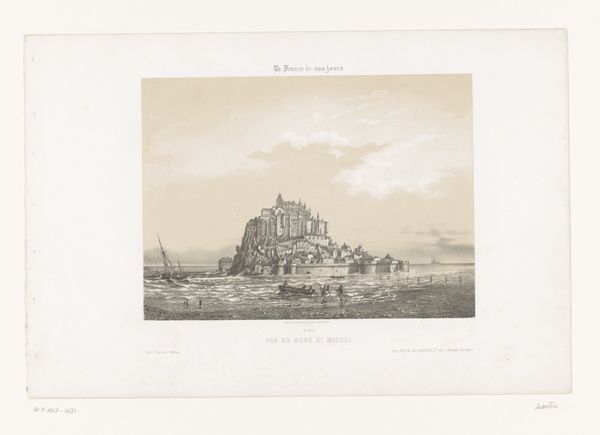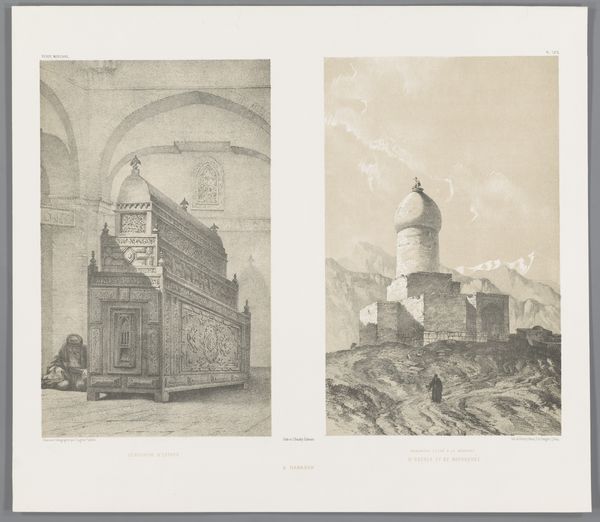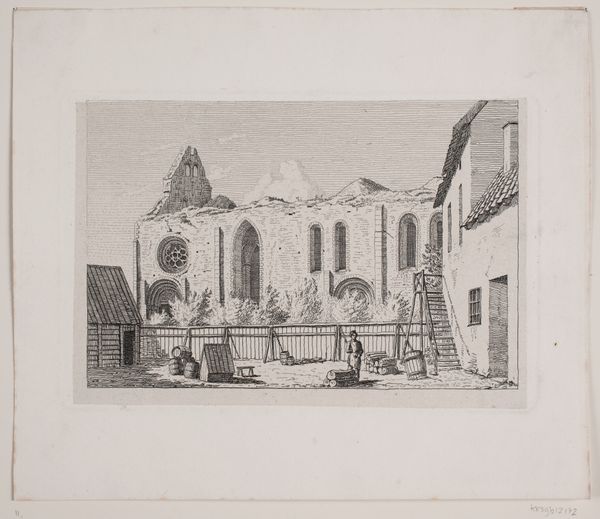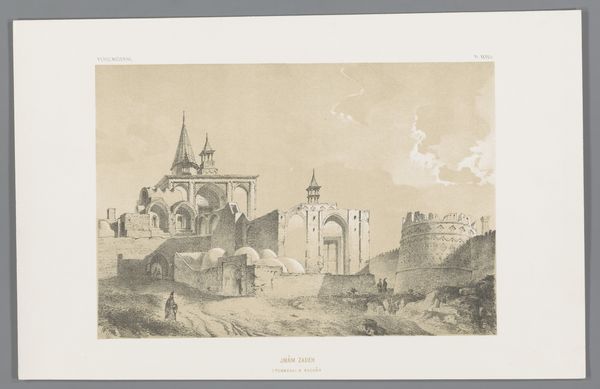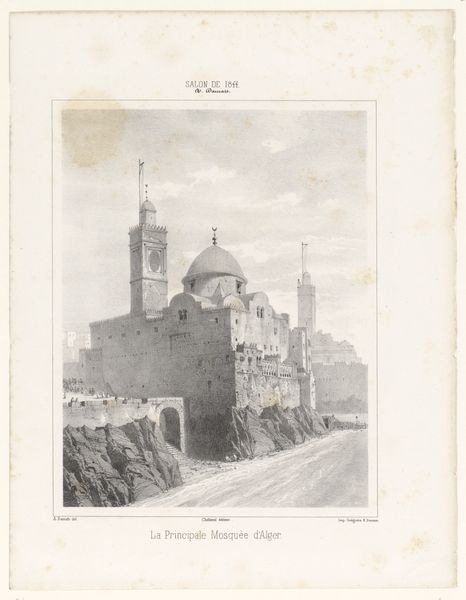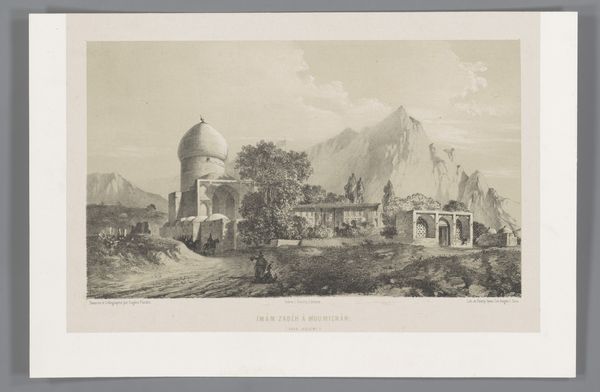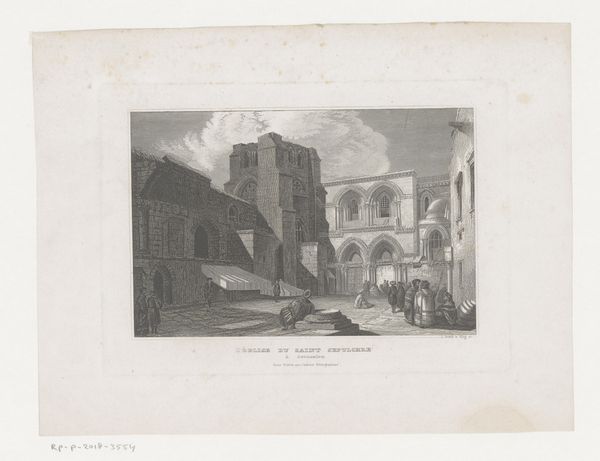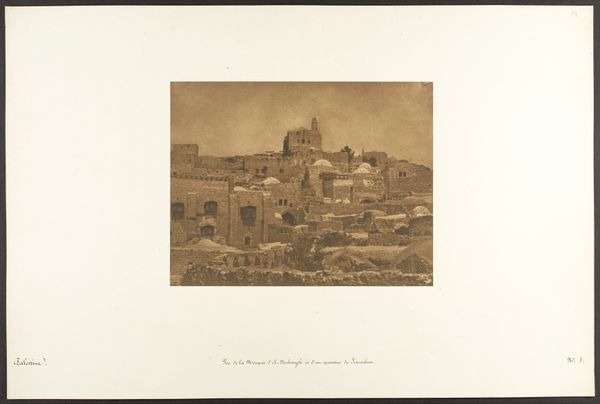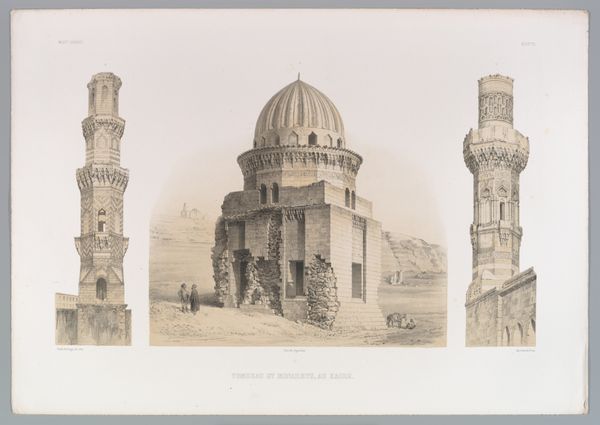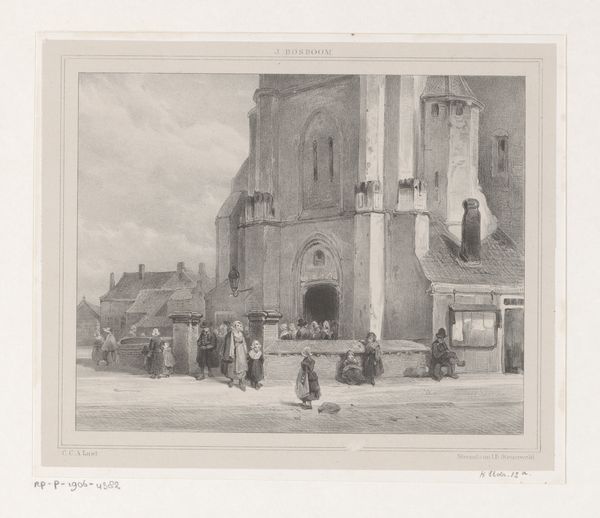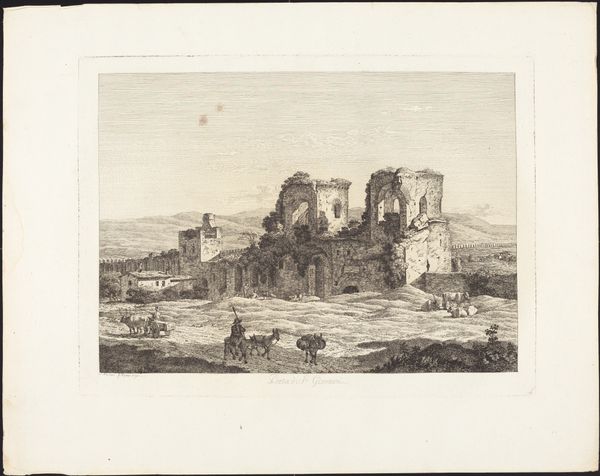
drawing, print
#
drawing
# print
#
landscape
#
islamic-art
Dimensions: height 415 mm, width 581 mm
Copyright: Rijks Museum: Open Domain
Curator: Looking at this landscape, it feels suspended in time, doesn't it? Editor: It really does. There’s this beautiful melancholy about it. It's titled 'Shah Khoda Mosque in Soltaniyeh' by Eugène Flandin, created between 1843 and 1854. It's a drawing or a print at the Rijksmuseum. What's catching my eye is the architecture. The sheer presence of that dome. Curator: Flandin was really documenting, wasn't he? Capturing these architectural wonders during his travels. Think about what Soltaniyeh represented historically: once the capital of the Ilkhanid dynasty. This image reminds me that behind these stones, there are stories of shifting powers. What do you get from it? Editor: It's about the contrast. I see a ruined building next to figures just milling about, sitting in what appears to be the former courtyard of the mosque. The ordinary continuing despite what I’m assuming at the historical moment represented devastation. Curator: Precisely. And the print medium itself has layers. It democratizes the image, enabling wider circulation of knowledge about architectural marvels from distant lands. Editor: But look closer—the details are gorgeous but very faded and worn looking. The textures hint at centuries of wear, almost like a ghost whispering secrets. The high viewpoint in Flandin’s composition, offering this comprehensive look…is this orientalist gaze or respectful archiving of heritage? Curator: It's a blurry line, isn't it? On one hand, he documents a rapidly changing landscape; on the other, these depictions inevitably carry the lens of European sensibilities. The interesting thing is, that tension becomes part of its story. Editor: So it shows its politics inadvertently. This image becomes something of a prompt for wider cultural and political conversations surrounding imperialism, preservation, and representation itself. Now that’s some heavy subject matter, even in light-brown ink. Curator: Art often sneaks up on you that way. What feels like a quiet observation becomes a potent source for reflection. Thanks, Eugène, I suppose. Editor: A muted testament indeed. The silence speaks volumes.
Comments
No comments
Be the first to comment and join the conversation on the ultimate creative platform.
